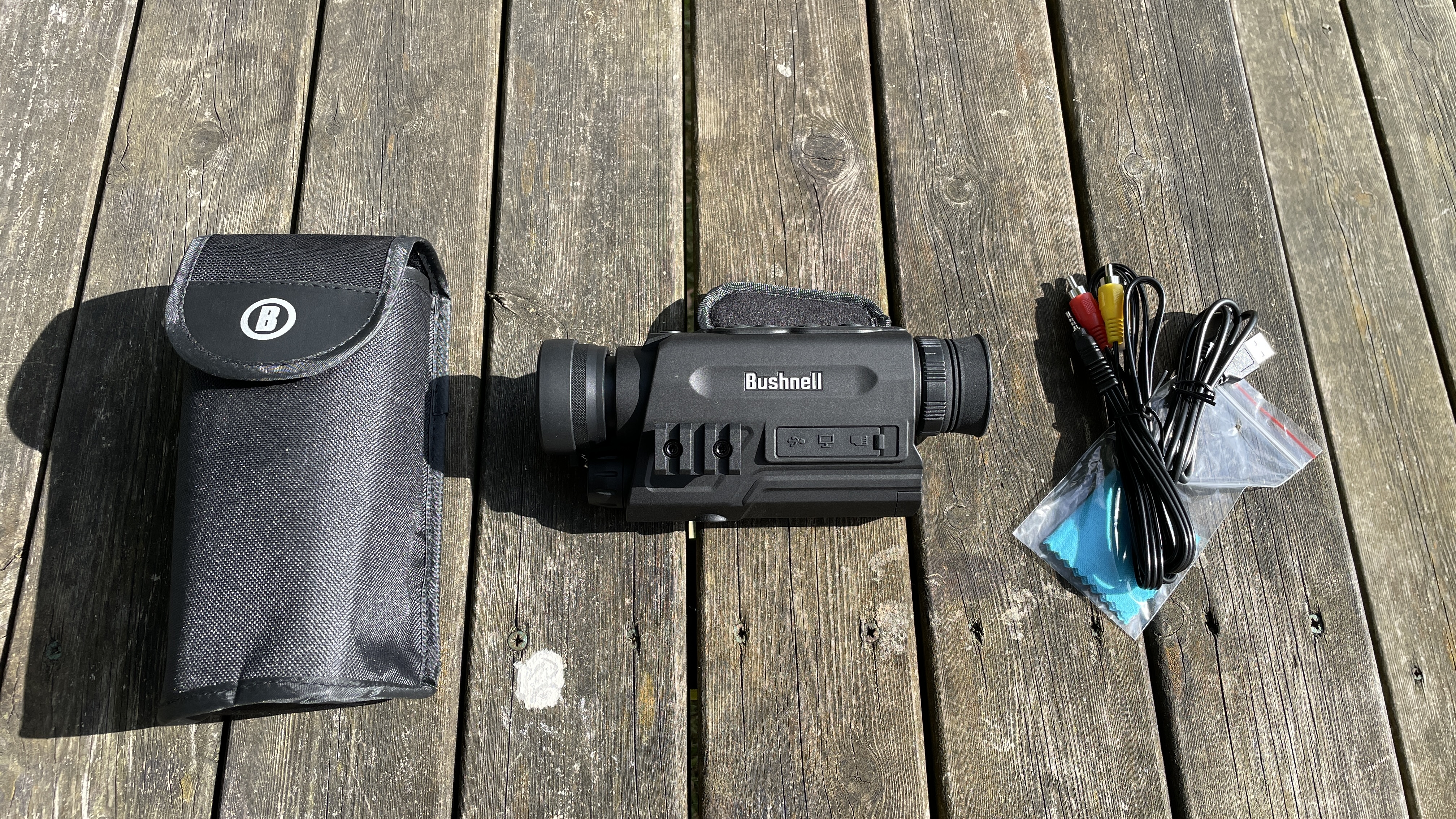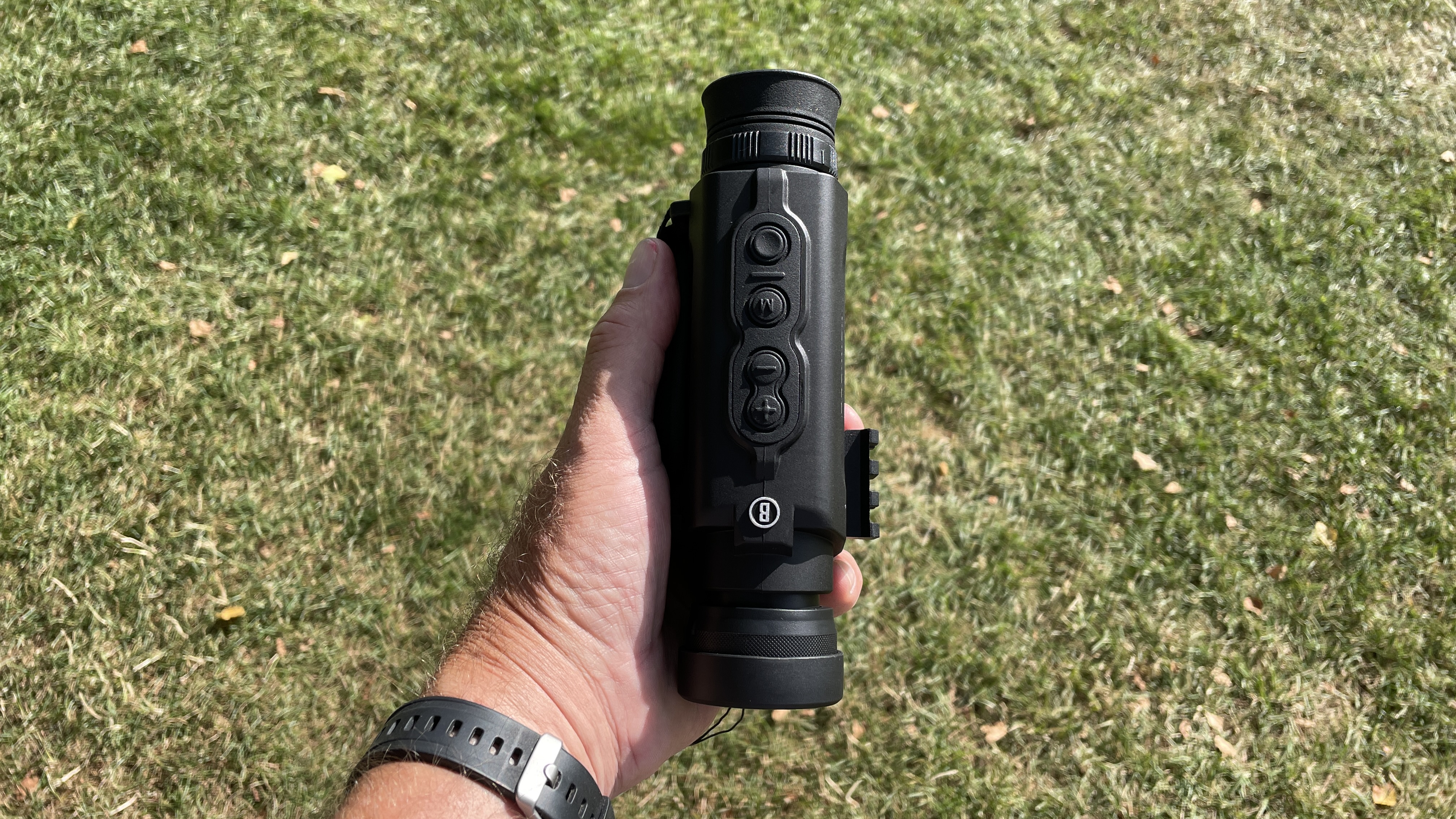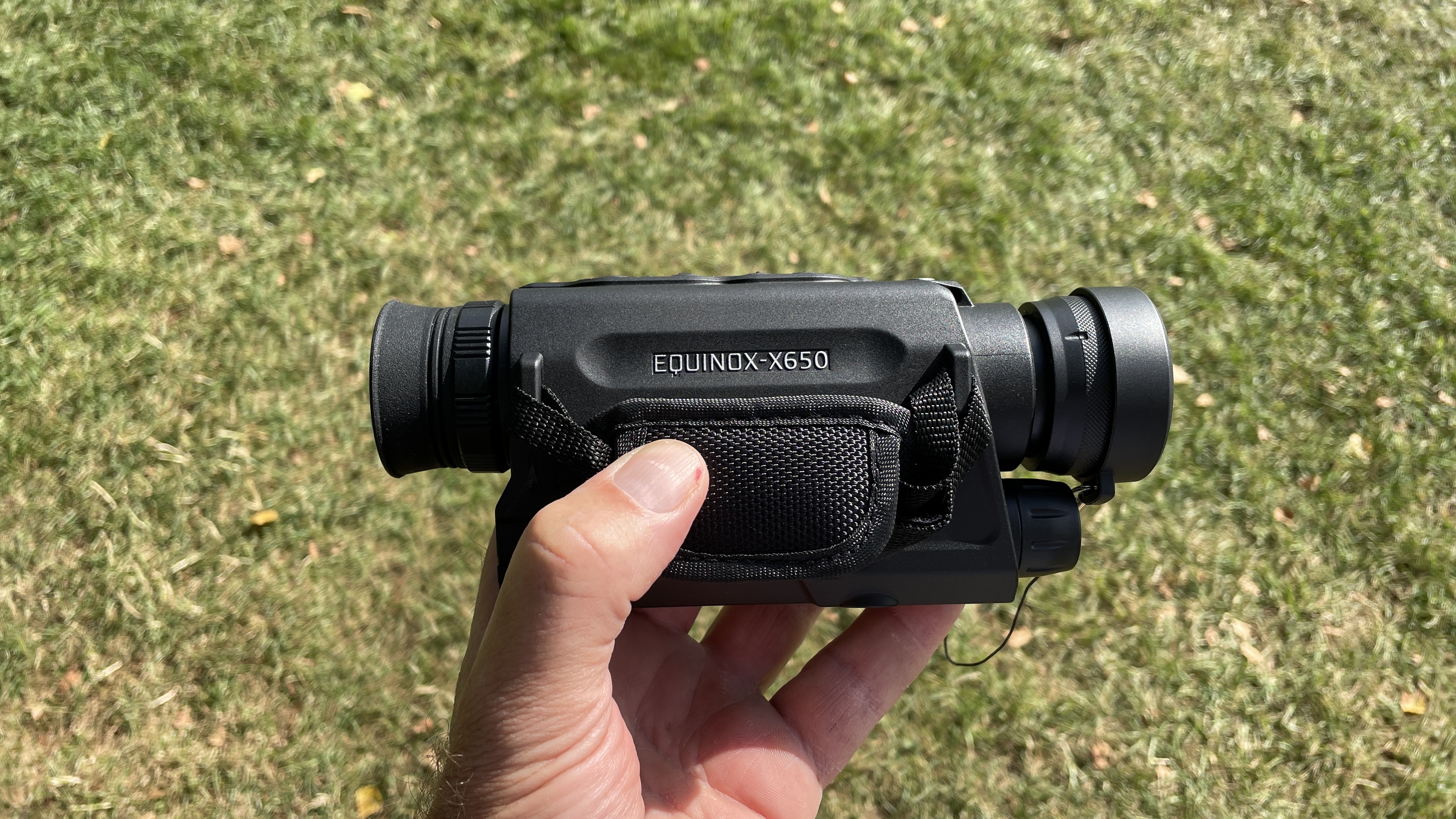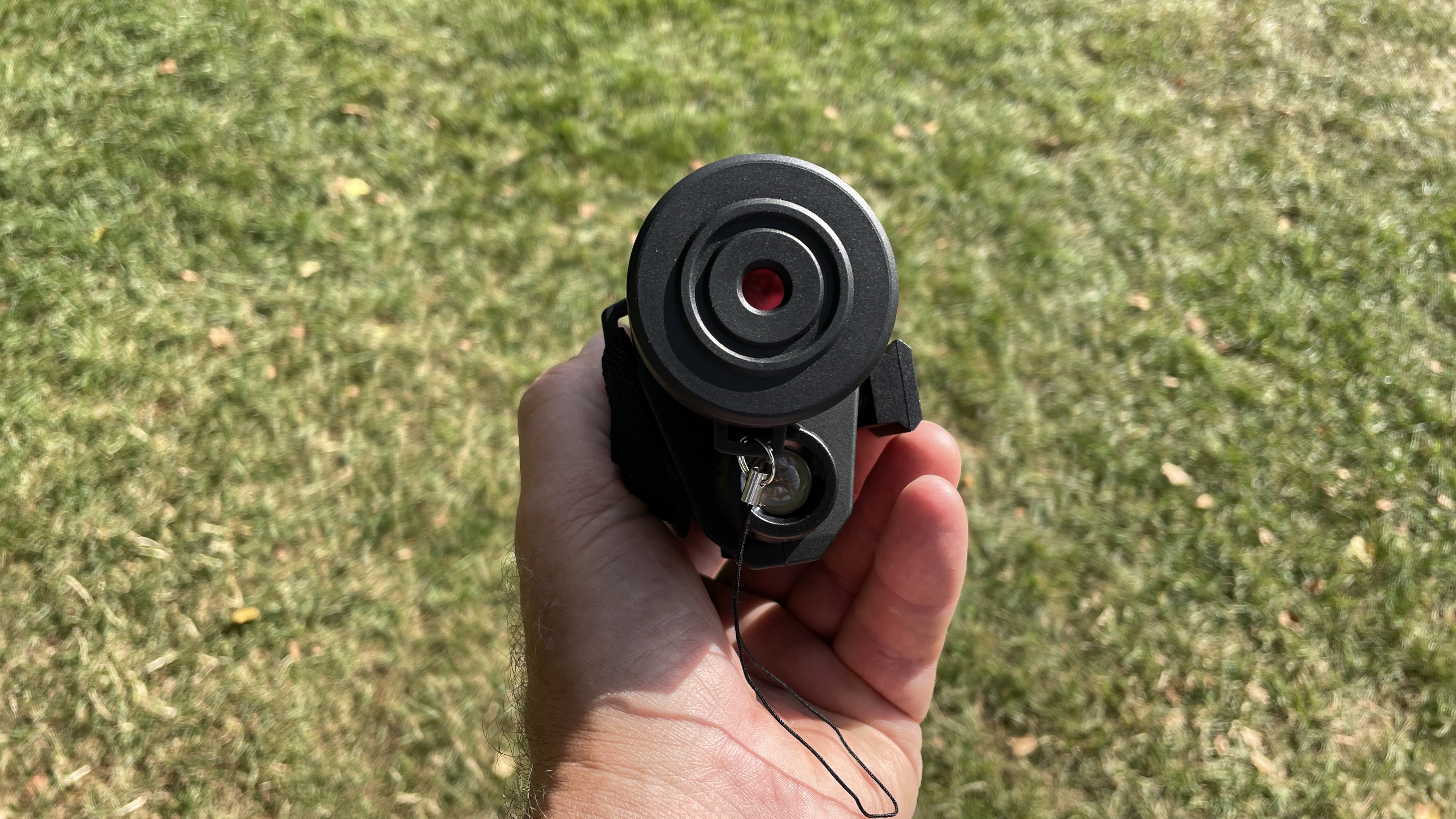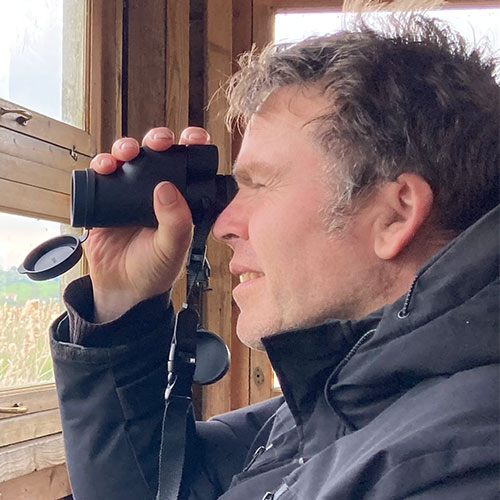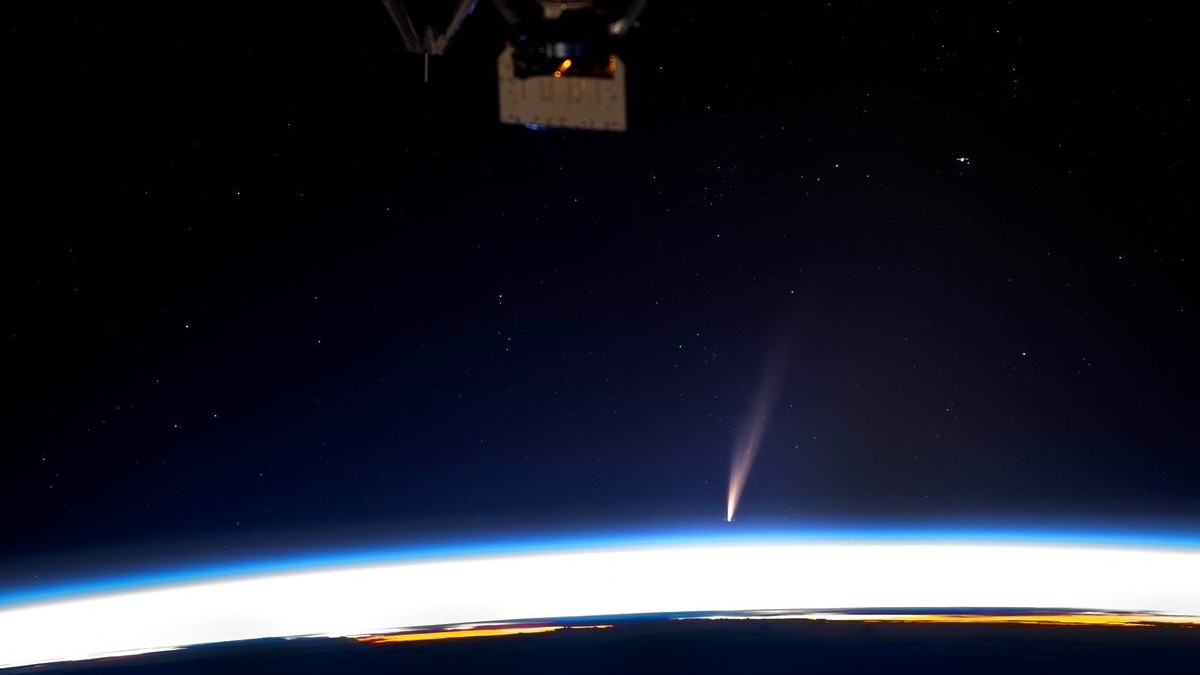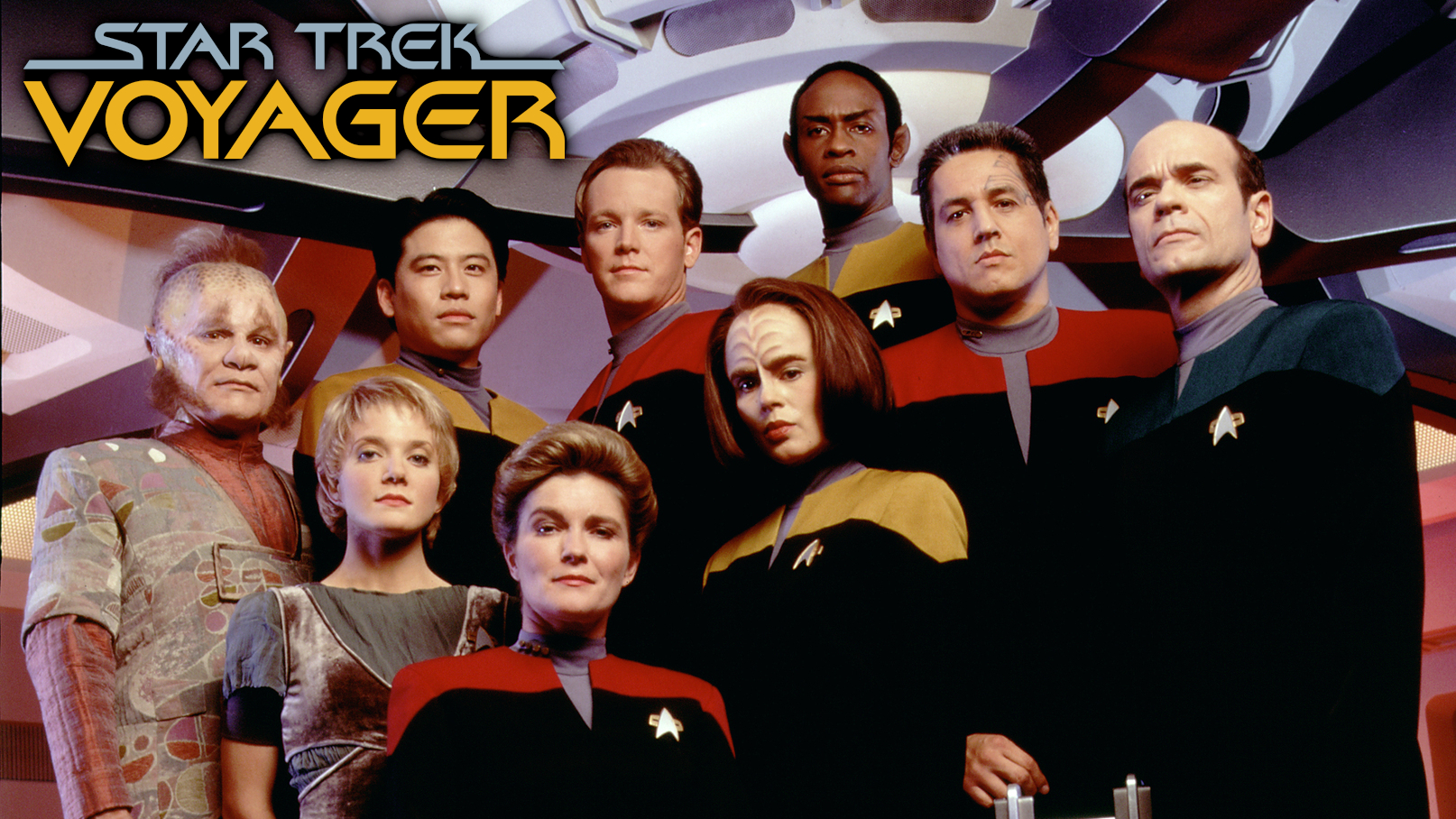Key specifications
Design: Roof prism
Magnification: 3x
Objective lens: 5 x 32mm
Eye relief: 22mm
Weight: 13.8 ounces (391 grams)
Dimensions: 7.5 x 3 x 3 inches (19.05 x 7.62 x 7.62 cm)
Durability: Plastic case with no waterproofing
The Bushnell Equinox X650 Digital Night Vision monocular is aimed at budget-conscious shoppers. However, it offers many features commonly found on more expensive rivals.
On first handling, the tight budget is evident; it’s plastic and suspiciously light in the hand. At 13.8 ounces (391 grams), it’s not lightweight for a monocular, but the Bushnell Equinox X650 promises much more than most monoculars at this price.
A powerful built-in infrared (IR) illuminator enables clear viewing in low ambient light or total darkness. The 32mm (1.26 inches) objective lens does an OK job of gathering light. The image is then processed through a digital CMOS sensor module and transferred to the micro-liquid crystal display (LCD). Images viewed on the LCD are magnified 3.0, 4.5 or six times, depending on the model. However, this magnification gives quite poor results, as the available light makes the higher magnifications look very grainy.
Bushnell Equinox X650 5×32: Design
★★★
- Simple, well-spaced controls
- Eyepiece with an adjustable diopter
- IPX4 water resistance
The Bushnell Equinox X650 Digital Night Vision monocular’s case is plastic, with a slight texture for grip. On the top, there are four well-spaced buttons (a power switch, mode button and digital focus controls). A rubber cup and a diopter focus wheel are on the eyepiece end; this purely controls the focus of the LCD screen. On the objective lens end, there’s another focus wheel. There’s also a lens cap with a filter that enables the monocular to be used during the day.
Underneath the objective lens is an infrared illuminator that provides images up to 650 feet (200 m) away. On the side of the unit, a Picatinny rail enables attachment to a rifle. A rubber cover covers the mini USB port, micro SD card slot and video-out connector. There is also a tripod fixing point.
On the other side of the unit, there’s a hand strap, which is helpful considering the unit is quite bulky. Under the eyepiece sits the battery compartment; the unit takes three AA batteries.
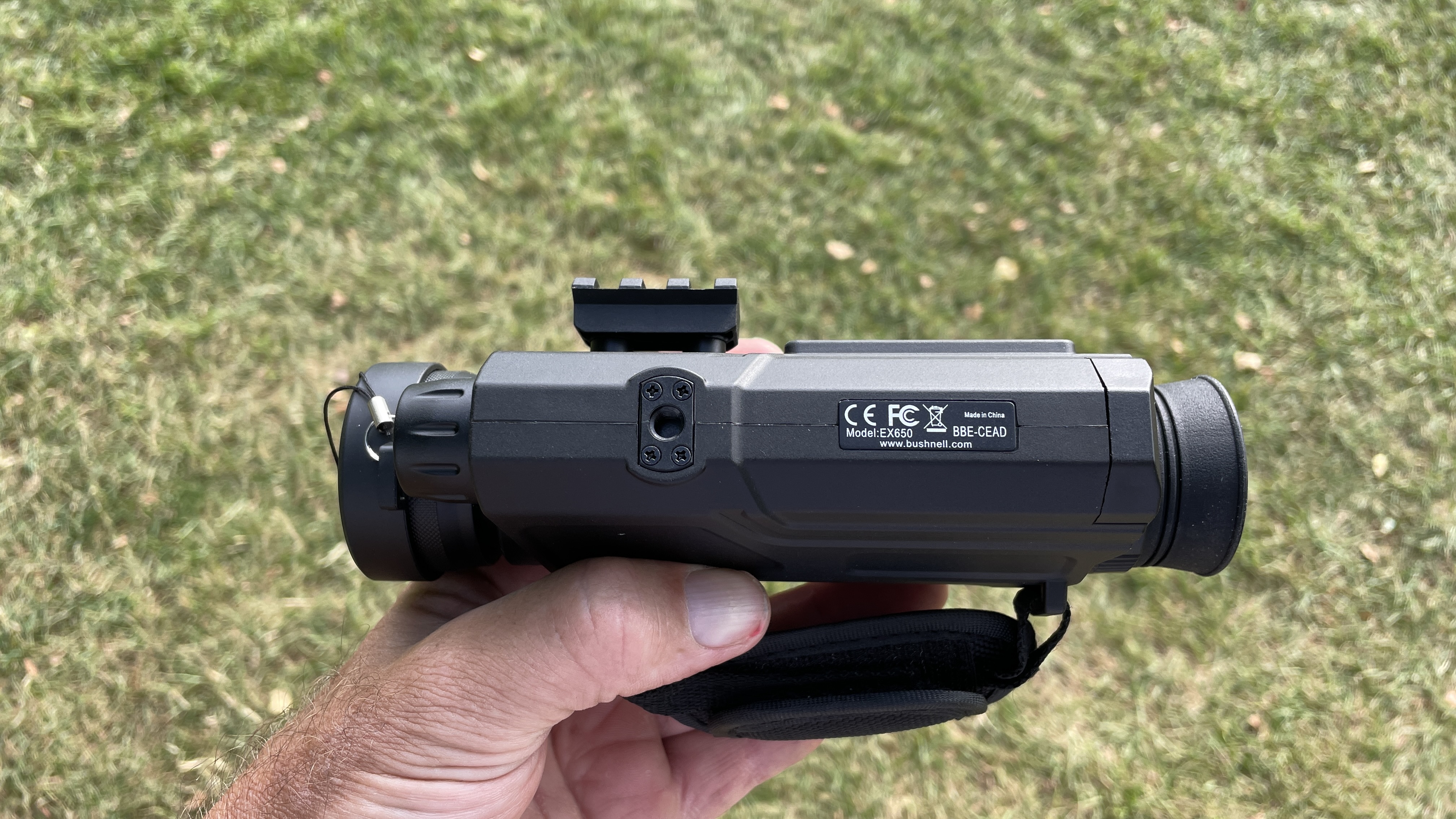
The tripod recess and Picatinny rail.
The focus wheels were quite stiff at first. We had to use both hands to operate the unit: one to hold the monocular to the eye and the other to use the controls. The top-mounted digital focus controls worked well, but we kept having to hunt for them, requiring us to take the unit away from our eye to set things up.
We adjusted the diopter for the LCD screen reasonably well. However, we had to hold the unit a few inches away from our eye to get the focus 100%. This narrows the field of view and could be better.
The waterproof covering on the controls makes it difficult to get a clear image. You must put a lot of pressure on the shutter release, which results in blurry photos. Using a tripod would help. If you use slow, steady pressure to avoid blur, the camera keeps turning off because the shutter release is also the power button.
Bushnell Equinox X650 5×32: Performance
- Good-but-basic monocular
- Design weaknesses that result in blurred images
- 650-foot night-vision range
The Bushnell Equinox X650 performed reasonably well in our test. However, the daytime photos won’t be useful for more than identification, and the nighttime imaging could have been better. But as a convenient, cheap way of getting into night vision activities, the Bushnell Equinox might be worth a try.
Bright lights at night confused the Bushnell Equinox X650. If the sensor picks up too much light, the unit switches to daylight mode a bit too readily. You can easily control this by looking away from the light source and slowly returning, but the unit would benefit from being less sensitive.
During our time with the Bushnell Equinox X650, we had the opportunity to witness the effect of wildfires, which created spectacular, vivid sunsets across the U.K. as the jet stream carried the smoke particles into the nighttime skies. They then diffused the light, turning the moon red. We were able to see the moon in these conditions pretty clearly. Aided by the IR illuminator on the bottom of the unit, we could view the moon with greater clarity than would have been possible with a normal monocular. This is because night vision devices can see a far greater range of light, from visible to infrared.
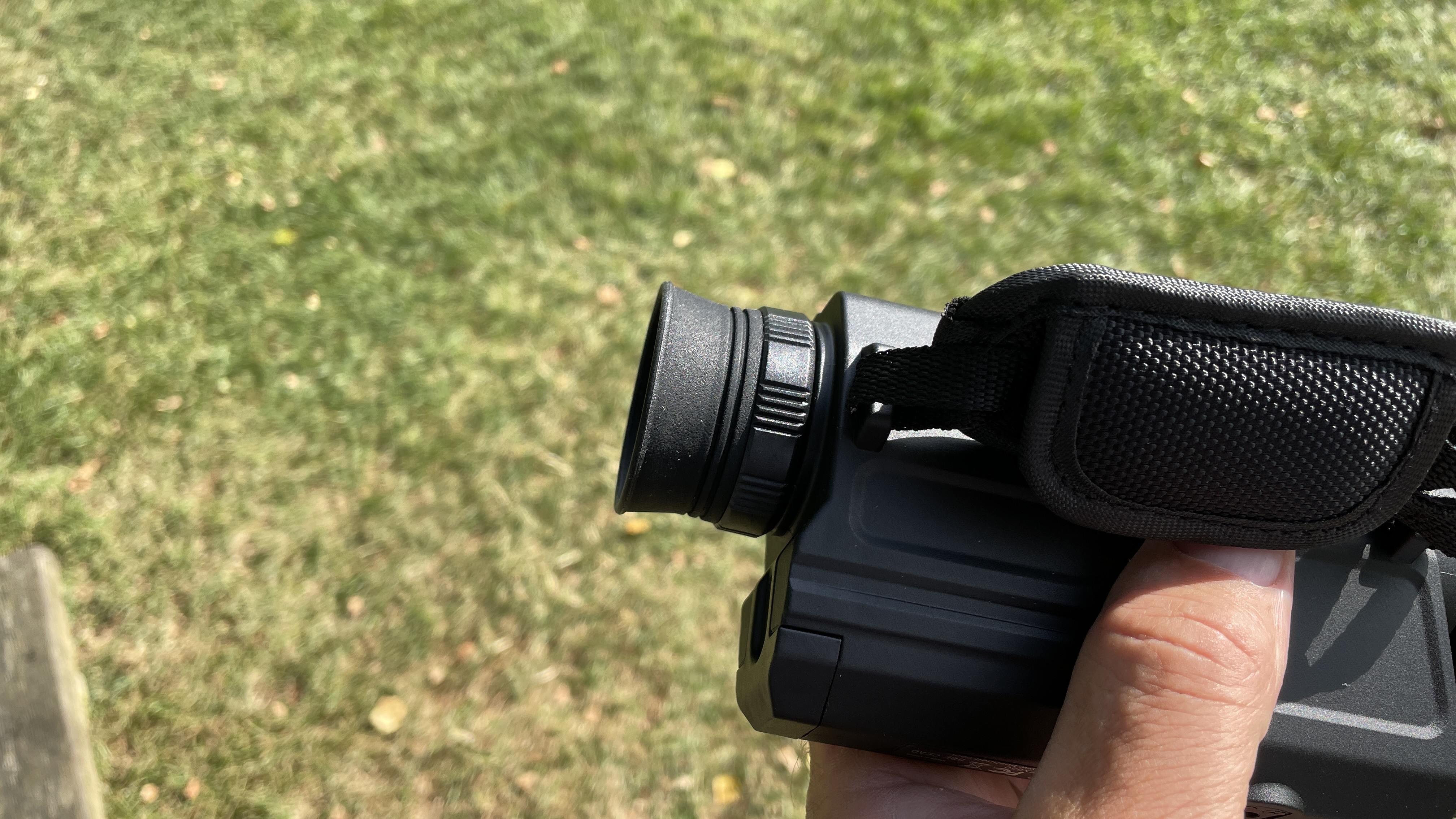
The diopter adjustment is awkwardly placed.
The X650 has a 3x zoom, which further enhances its stargazing ability. However, the resulting images stored on the memory card were grainy. However, the unit also has a body-mounted focus wheel, which helps reduce the need for digital zoom.
The provided daytime filter limits the amount of light that gets to the sensor, thus preventing the CMOS infrared sensor from getting overloaded with light. This gave the image a red tinge and sharply increased the contrast.
The filter isn’t needed at night, and this is where the Equinox X650 is at its best. Although the camera functionality is limited, the infrared booster mounted underneath the 32mm objective lens delivers pleasing results.
When using the unit at night at a lake, we stumbled upon a neat use for the night-vision monocular: watching fish! Because the water’s surface was very still at night, the infrared booster didn’t bounce too much light back at the sensor, which allowed us to watch fish at quite a decent depth. We saw bats catching insects under trees, even though they were challenging to follow because they were hampered by the tiny 32mm objective lens.
As long as you do not need large prints of nighttime shots, the Equinox X650 performed well at its intended use. It would be an interesting and stimulating piece for a nighttime walk between parents and children.
Bushnell Equinox X650 5×32: Functionality
★★★
- Daytime and nighttime use with filter
- Ability to capture photos and video
- Low-res images
The ability to use the Equinox X650 for both daytime and nighttime imaging is useful. However, as with many of this monocular’s functions, the performance of both modes is limited. When we took some daytime shots, they often came out blurry because of the pressure needed to press the shutter release. The unit required less shutter-release time at night, but the images were pretty low-resolution, rendering them only snapshots.
This limitation may not matter as much for children, who tend to care more about function than quality. However, discerning adults would struggle to get usable imagery from the camera.
The digital zoom has three positions. However, it enlarges only part of the original image, so as the zoom increases, so does the grain. The digital zoom wasn’t worth using at night, but the camera also has a body-mounted focus wheel, which we found to be a helpful addition. Yet it also puts the hand you use to focus in front of the IR illuminator, effectively turning off the camera. This meant we had to use an over-the-top hand position to focus, making it very difficult to hold the camera steady.
Adjusting the IR booster at night had mixed results. As we increased the brightness, the camera would often overload the sensor and switch between IR mode and daytime mode. Setting 1 proved to be less problematic, but this is a matter of personal taste.
Bushnell Equinox X650 5×32: User reviews
Users say the unit is well priced but basic. The camera doesn’t come with an instruction manual; it has to be downloaded from the manufacturer’s website.
How we tested the Bushnell Equinox X650 5×32
We put every instrument through a rigorous review. We consider many aspects, including its construction, design, functionality and on-site performance. We also look at the included accessories and suggest other equipment if it would benefit the experience.
Each team member carefully tests each instrument and is knowledgeable about its subject areas. Hands-on experience with each instrument is a vital part of the process.
Should I buy the Bushnell Equinox X650 5×32?
In our assessment, the Bushnell Equinox X650 Digital Night Vision is a good entry-level jack-of-all-trades monocular; it performs adequately across the board, without excelling at any one thing. It would be an excellent addition to the kit bag of a wildlife watcher or hobbyist general observer. It can also be used for skywatching but the camera’s capability is limited, the focus range and light handling are decent.
If the Bushnell Equinox X650 Digital Night Vision isn’t right for you, consider the Nightfox Prowl night vision goggles, which are similarly priced but may be more convenient because they’re hands-free. Another option is the Goyojo handheld thermal imaging camera, which is an entry into the world of thermal imaging rather than infrared, or the compact, budget-friendly Nightfox Cub digital night vision monocular.

